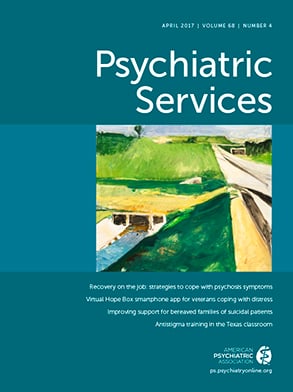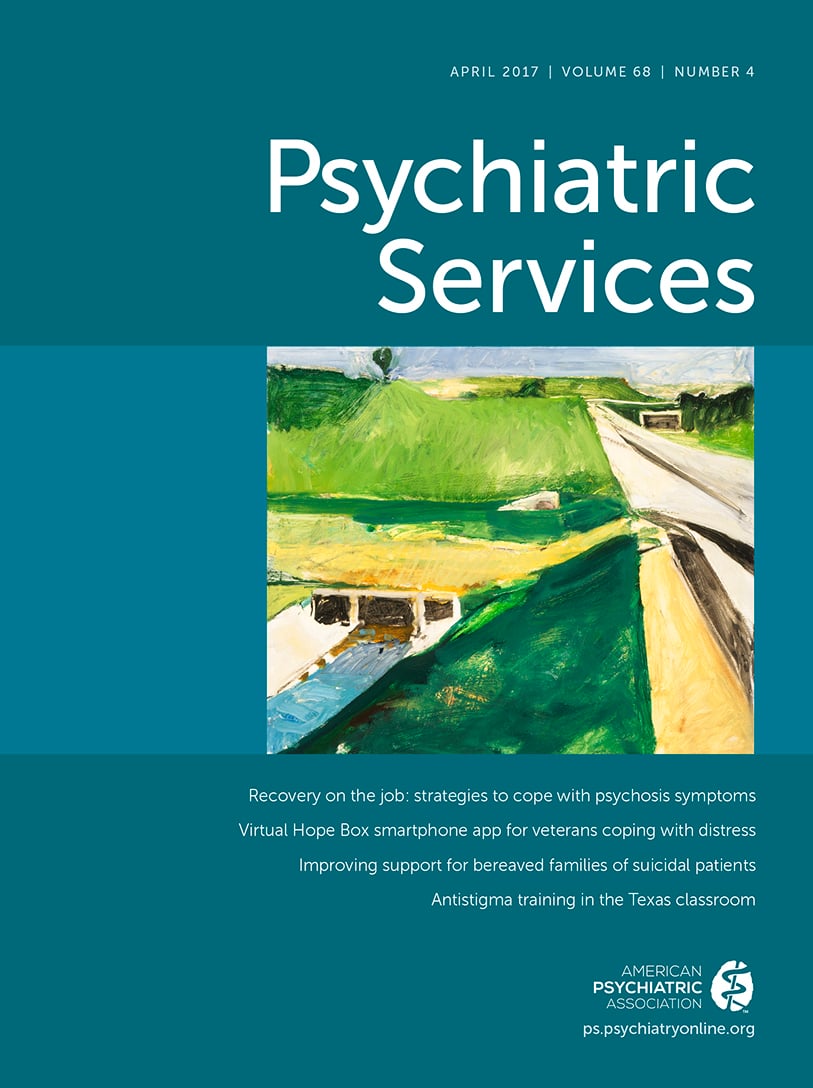A growing number of U.S. states—six at the moment: California, Colorado, Montana, Oregon, Vermont, and Washington—have legalized physician-assisted death for people with terminal illnesses (
1). However, several other countries—among them Belgium, the Netherlands, and Switzerland—have taken a different approach, permitting physicians to help people die if they are experiencing significant and intractable suffering, regardless of whether the condition involved is likely to cause their death (
2). These broader criteria for physician-assisted death have opened the door to people with mental disorders who seek medical assistance in ending their lives. Although no U.S. jurisdiction has gone this far, Canada is struggling with this question, with the outcome still uncertain, but with clear implications for issues that the United States will face.
Canada’s Right to Physician-Assisted Death
In February 2015, the Canadian Supreme Court, in
Carter v. Canada (
3), ruled that a blanket ban on physician-assisted death violates the country’s 1982 Charter of Rights and Freedoms, a document akin to the U.S. Constitution. Section 7 of the Charter establishes that “Everyone has the right to life, liberty and security of the person and the right not to be deprived thereof except in accordance with the principles of fundamental justice.” In U.S. terms, this provision resembles the Fifth Amendment to our Constitution, which guarantees due process of law. The Court held that physician-assisted death could not be prohibited “for a competent adult person who (1) clearly consents to the termination of life; and (2) has a grievous and irremediable medical condition . . . that causes enduring suffering that is intolerable to the individual in the circumstances of his or her condition.” In addition, to demonstrate irremediability a person could not be required to accept treatment that he or she found unacceptable.
Recognizing that enabling legislation and regulation were needed, the Court suspended enforcement of the ruling for 12 months, and later for an additional four months, to give the government time to act. When the second extension was granted, the Court specified that people seeking physician assistance in dying could petition a local court for confirmation that they met the criteria laid out in Carter, and a court’s agreement would exempt physicians who aided them from prosecution. Most people who sought court approval during this period suffered from terminal conditions—although that was not required by Carter, which focused on irremediable suffering. However, one 58-year-old woman in Alberta, known only by the initials E.F., applied for court approval on the basis of a mental condition—conversion disorder—that she claimed met the Supreme Court’s test. The case was quickly heard and E.F.’s application granted, but the Attorney General of Canada, acting on behalf of the federal government, appealed the decision to the Alberta Court of Appeal.
Conversion disorder might seem an unusual basis for a request for physician-assisted death, but the court described E.F.’s condition in dire terms. “She suffers from involuntary muscle spasms that radiate from her face through the sides and top of her head and into her shoulders, causing her severe and constant pain and migraines. Her eyelid muscles have spasmed shut, rendering her effectively blind. Her digestive system is ineffective and she goes without eating for up to two days. She has significant trouble sleeping and, because of her digestive problems, she has lost significant weight and muscle mass. She is non-ambulatory and needs to be carried or use a wheelchair. Her quality of life is non-existent” (
4). The government challenged the applicability of
Carter to people whose suffering was due only to a mental disorder, but the court found that E.F. met all of the Supreme Court’s criteria, which notably did not require a terminal illness. Within a few weeks of the decision, with the assistance of a physician, E.F. was dead (
5).
Canada’s government was still left with the task of devising legislation that would implement the Supreme Court’s ruling. Although Parliament did not quite meet the Court’s deadline, by mid-June 2016 a new law was approved. Of particular note, and in contrast to what the Alberta Court of Appeal and some commentators thought was the plain meaning of
Carter, the new law limits physician-assisted death (it uses the term “medical assistance in dying”) to people who meet the following criteria: a serious and incurable illness, disease, or disability; an advanced state of irreversible decline in capability; enduring physical or psychological suffering that is intolerable to them and that cannot be relieved under conditions that they consider acceptable; and their natural death has become reasonably foreseeable (
6,
7).
Taken on its face, the current statute would appear not to apply to people whose mental disorders were the sole cause of their suffering, given that the government interpreted death being “reasonably foreseeable” as “a real possibility of the patient’s death within a period of time that is not too remote.” (
8) Thus, like those U.S. states that have legalized physician-assisted death, Canada requires that a terminal condition be present to qualify for assistance in dying. However, a case currently under way in British Columbia challenges many of the statute’s limitations, including the requirement that a person’s death be reasonably foreseeable (
9). The ultimate shape of Canada’s law remains to be determined, and the government has funded a committee to explore extending the law to people with mental disorders, mature minors, and people with advance directives (
10).
Mental Disorders as a Basis for Physician-Assisted Death
Canada’s experience to date with attempting to regulate medical involvement in assisted death may foreshadow debates to come in the United States. Once the premise is accepted that persons whose death is likely within six months—the rule adopted in the U.S. jurisdictions that have assisted-death statutes—can control their fate by ending their lives with medical assistance, the question of extending that right to people in nonterminal conditions who are experiencing severe suffering will inevitably arise. The similarity between Section 7 of the Canadian Charter and the Fifth Amendment to the U.S. Constitution suggests that a legal argument can be brought to bear to expand the scope of physician assistance to other persons who desire to end their lives. Hence, it is important to consider on its merits the question of whether it would be good policy to allow mental disorders to serve as grounds for medical aid in dying.
At the core of arguments in support of allowing physician-assisted death for people with mental disorders is that some psychiatric conditions cause intense distress and are unresponsive to treatment. An estimated 12%−20% of patients with depression, for example, are thought to be treatment resistant (
11). However, some patients classified as resistant to treatment have failed to respond to just a single antidepressant, and many have not had trials of evidence-based psychotherapy, other classes of medications, adjunctive treatments, or electroconvulsive therapy, which would be likely to increase the rate of response. Because laws such as Canada’s specify that patients do not have to undergo treatments they do not want before being found to have intractable conditions, a substantial proportion of people with mental disorders seeking assisted death could probably obtain relief from other available approaches.
Demoralization and hopelessness are often part of the mental disorder itself, thus heightening the risk of inaccurately characterizing a patient as having an intractable condition. Patients may reject potentially effective treatments and request assistance in ending their lives as a consequence of the depression, anxiety, and other symptoms that effective treatment would alleviate. Although laws permitting physician-assisted death specify that the person must be competent to make that decision, determining competence is difficult when the wish to die is part of the underlying syndrome itself. In general medical settings, it is common to see patients who refuse treatment on seemingly rational grounds yet change their decision once their depression is effectively treated. It will often be impossible to assess reliably whether, but for the impact of the mental disorder itself on decision making, a person requesting death would choose to continue living.
Data from countries that allow people with mental disorders to seek assisted death suggest additional reasons for caution (
12). In a reported series of cases from the Netherlands, over a quarter of psychiatric patients who died with assistance did so with a physician not previously involved in their treatment (
2). Indeed, an end-of-life clinic was created specifically to facilitate these requests. Thus, the difficult determination of whether a condition was untreatable was made primarily by someone who may have known the patient for only days or weeks, and in about a quarter of the cases the physicians involved in the case could not reach agreement as to whether the criteria had been met. Roughly half of the patients in the Dutch series and in a second set of cases from Belgium (
13) were reported to have personality disorders—conditions that exacerbate the risk of impulsive decisions in reaction to interpersonal issues or environmental stresses. Perhaps reflecting this disposition, 38% of patients in the Belgian sample withdrew their requests for assisted death before the evaluation process could be completed.
To date, all of the countries in which physician-assisted death for mental disorders has been legalized—and Canada as well—have universal health insurance systems, so that people with mental disorders at least have the opportunity to access care. In the United States, where coverage is not a given and access to mental health treatment is a widely acknowledged problem, it would be ironic if patients were given access to medical assistance in dying in place of adequate psychiatric care. Moreover, even in the Netherlands social isolation was reported as a problem in 56% of the cases, a figure that might be much higher in the United States, with its fragmented system of care. It is a troubling prospect that death might serve as an alternative to provision of adequate social supports and other community-based programs. The impact on the treatment system of an assisted-death option is also of concern. Will mental health professionals, who are often overwhelmed and underresourced, be more likely to give up treating difficult cases, perhaps even subtly encouraging patients to seek assistance in dying instead? Might stressed-out family members do the same?
In response to these and other concerns, the American Psychiatric Association recently adopted a statement opposing physician-assisted death for mental disorders, taking the position that “a psychiatrist should not prescribe or administer any intervention to a non-terminally ill person for the purpose of causing death” (
14). Nonetheless, use continues to grow in those countries where it is permitted. In the Netherlands, two people seeking death because of mental disorders died with physician assistance in 2010, but the number grew to 56 by 2015, about 1% of the total (
15). In Belgium, by comparison, in 2013 3.9% of persons who underwent euthanasia did so because of a neuropsychiatric disorder, and a comparable percentage reported that their suffering was exclusively psychological (
16). The United States may choose to take a different approach to the issue of physician-assisted death for people with mental disorders, but mental health professionals should be prepared for what is likely to be a sustained and contentious debate.

